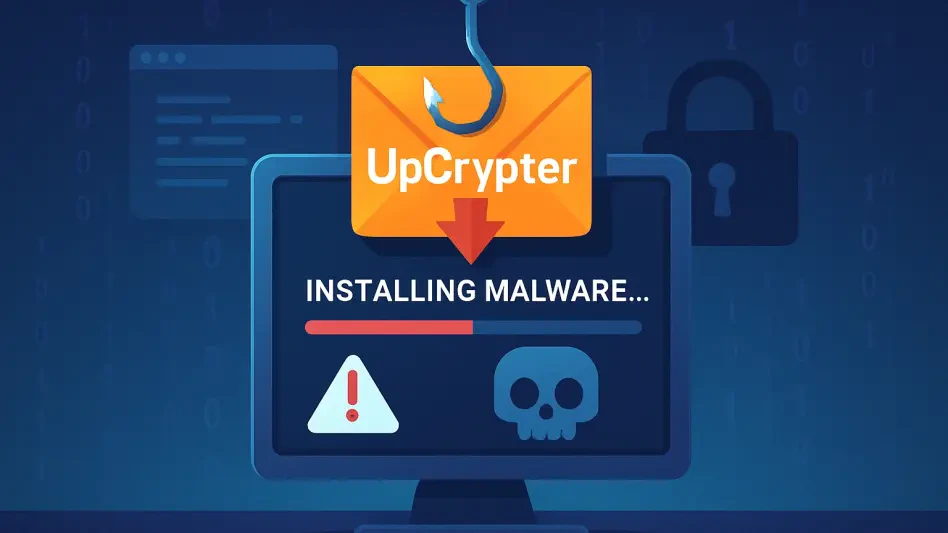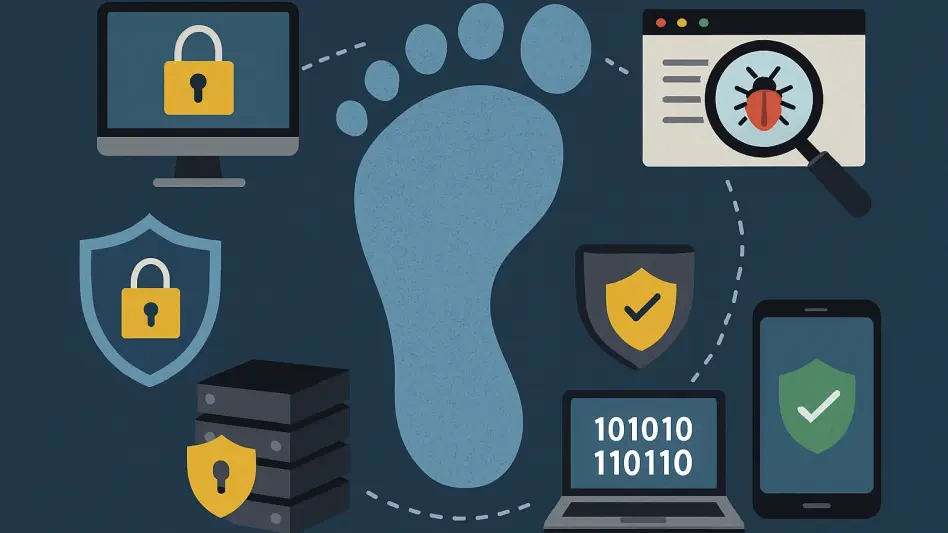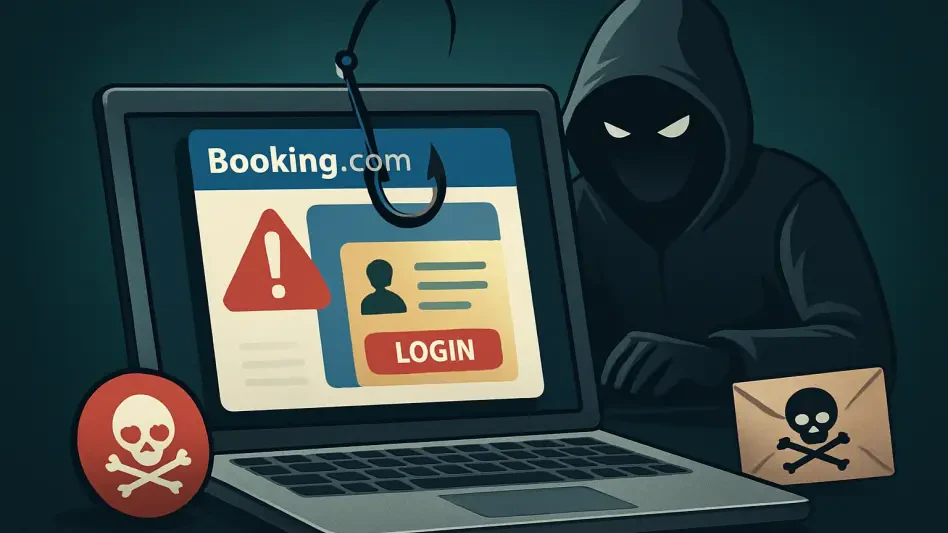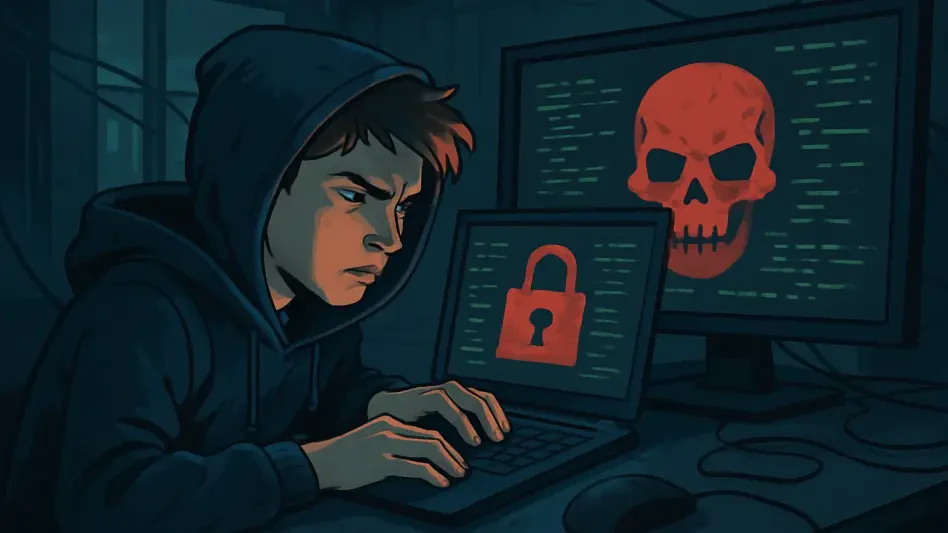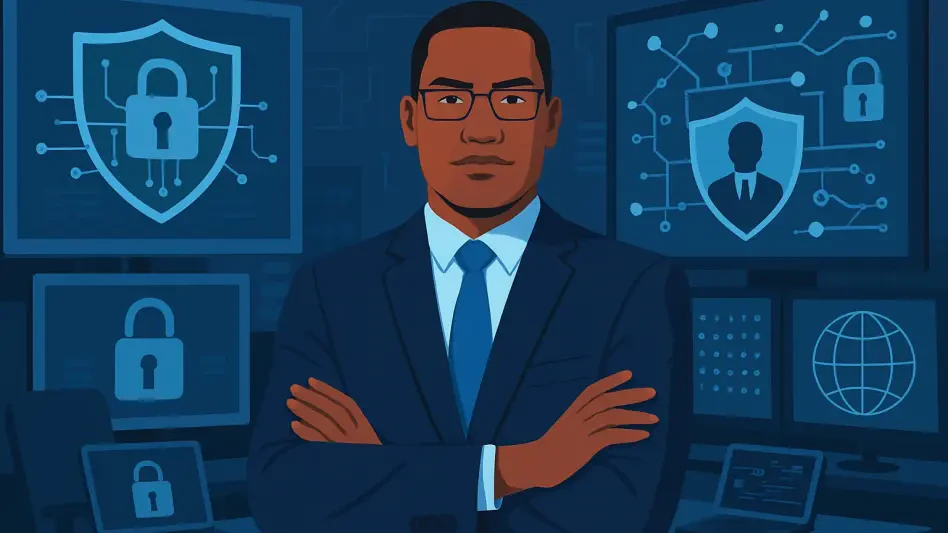In a world where a single click can unleash chaos, phishing emails remain a chilling gateway for cyber devastation, striking fear into the hearts of users everywhere. Picture this: an innocuous email lands in an inbox, labeled as a “Missed Phone Call” notification, urging the recipient to review a voicemail, only to reveal a sinister plot. What seems like a routine interaction turns deadly as it opens the door to UpCrypter, a ruthless malware capable of seizing control of entire systems. This isn’t just a minor inconvenience—it’s a global threat targeting Windows users across industries, leaving both individuals and organizations exposed to unseen attackers. The sophistication of this campaign demands attention, as it transforms everyday digital habits into potential disasters.
The Alarming Rise of a Digital Menace
The significance of this cyber threat cannot be overstated. With detections skyrocketing in a matter of weeks, as reported by cybersecurity experts, UpCrypter malware has emerged as a critical risk to sectors like manufacturing, healthcare, and technology. This isn’t merely about stolen passwords; it’s about hackers gaining persistent access to networks, costing millions in damages and eroding trust in digital systems. The reliance on email communication in modern business amplifies the danger, making this phishing-driven malware a pressing issue that affects entities worldwide.
Understanding the stakes reveals a broader challenge in cybersecurity. As companies digitize operations, the human element—trust in familiar notifications—becomes a vulnerability exploited with alarming precision. This campaign’s rapid spread underscores the urgent need for awareness and defense, positioning UpCrypter as a stark reminder of how quickly a single email can unravel an organization’s security.
UpCrypter’s Stealthy Invasion Through Everyday Emails
The mechanics of this phishing campaign are as deceptive as they are dangerous. It begins with an email, often disguised as a voicemail alert or a purchase order, crafted to mimic legitimate correspondence with tailored branding. These messages prey on routine interactions, exploiting the recipient’s instinct to act on seemingly urgent matters. The trap is subtle yet effective, blending seamlessly into the daily flood of inbox notifications.
Once engaged, the email directs users to a malicious HTML attachment, which ushers them to counterfeit websites. These sites, often adorned with stolen logos and domains resembling the victim’s company, create a false sense of security. A prompted download then unleashes a harmful JavaScript script, silently installing UpCrypter and setting the stage for deeper infiltration. The precision of this delivery method shows a calculated intent to bypass suspicion at every turn.
The final blow comes with UpCrypter deploying Remote Access Tools (RATs) like DCRat and PureHVNC. These tools grant attackers full control over infected systems, hiding malicious code in JPG files and altering the Windows registry for persistence. Even more cunning, the malware evades detection by shutting down in virtual environments or when it senses analysis tools like Wireshark, demonstrating a level of sophistication that challenges traditional defenses.
The Cunning Tactics Behind the Malware’s Success
Industry voices shed light on why UpCrypter remains so effective. John Bambenek, a cybersecurity expert, highlights the power of simplicity in these attacks, noting, “Phishing lures like voicemail notifications exploit trust in everyday communications, banking on human error.” This insight reveals a core truth: even the most tech-savvy individuals can fall prey to well-crafted deception under the right circumstances.
Further analysis shows UpCrypter’s advanced evasion strategies as a key to its persistence. The malware halts operations or forces system restarts when under scrutiny, dodging attempts to study its behavior. This adaptability, combined with its ability to spread undetected across global networks, paints a troubling picture of a threat that outsmarts conventional security measures and demands innovative countermeasures.
The real-world impact is evident in the diversity of affected industries, from retail to hospitality. A case in point involves a mid-sized manufacturing firm that suffered significant data loss after an employee clicked on a fake purchase order email, unknowingly granting attackers access to sensitive blueprints. Such incidents illustrate how UpCrypter’s tactics ripple beyond individual systems, threatening entire operational frameworks.
Industries Under Siege: A Global Threat Landscape
The scope of UpCrypter’s reach is staggering, with no sector left untouched. Healthcare providers face risks to patient data, while construction firms encounter disruptions in project timelines due to compromised systems. The technology sector, often seen as a bastion of digital security, isn’t immune either, with reports of infiltrated networks leading to intellectual property theft. This indiscriminate targeting underscores the malware’s adaptability to various environments.
Geographically, the campaign spans continents, affecting organizations from North America to Asia. Small businesses, lacking robust cybersecurity budgets, are particularly vulnerable, often becoming entry points for broader network attacks. Meanwhile, larger corporations grapple with the scale of potential breaches, where a single infected device can jeopardize global operations. The pervasive nature of this threat demands a collective response across borders and industries.
Statistics paint a grim reality, with detections of UpCrypter increasing sharply since early 2025. Cybersecurity analysts warn that without immediate action, the trajectory could worsen, projecting a potential doubling of incidents by 2027 if current trends persist. This data serves as a wake-up call, emphasizing that the battle against phishing-driven malware is far from over and requires sustained vigilance.
Building Fortresses Against Phishing and UpCrypter Attacks
Combating UpCrypter begins with actionable defenses that can be implemented swiftly. Strengthening email security through advanced filtering systems is paramount, ensuring malicious HTML attachments are intercepted before reaching users. This technological barrier acts as a first line of defense, reducing the risk of initial exposure in high-volume communication environments.
Monitoring for suspicious patterns offers another layer of protection. As suggested by experts, tracking events like HTML attachments triggering PowerShell usage can serve as an early warning sign of malware installation. Additionally, restricting user access to tools like PowerShell, especially when initiated from email clients, minimizes the attack surface and curbs the potential for deeper system compromise.
Education remains a cornerstone of prevention, with regular training sessions equipping employees to identify phishing emails. Focusing on subtle indicators—such as mismatched domains or urgent language—can empower teams to act cautiously. Keeping systems updated with the latest patches and antivirus software further bolsters resilience, addressing UpCrypter’s evolving evasion tactics with a proactive stance rooted in expert guidance.
Looking back, the fight against UpCrypter malware revealed a critical intersection of technology and human behavior. The campaign’s success hinged on exploiting trust, weaving deception into the fabric of routine digital interactions. Reflecting on the havoc wreaked across industries, it became evident that solutions lay in layered defenses—combining robust systems with informed users. Moving forward, organizations needed to prioritize continuous adaptation, investing in real-time threat intelligence to anticipate phishing trends. Only through such proactive measures could the silent predator of UpCrypter be tamed, safeguarding digital landscapes for years to come.

